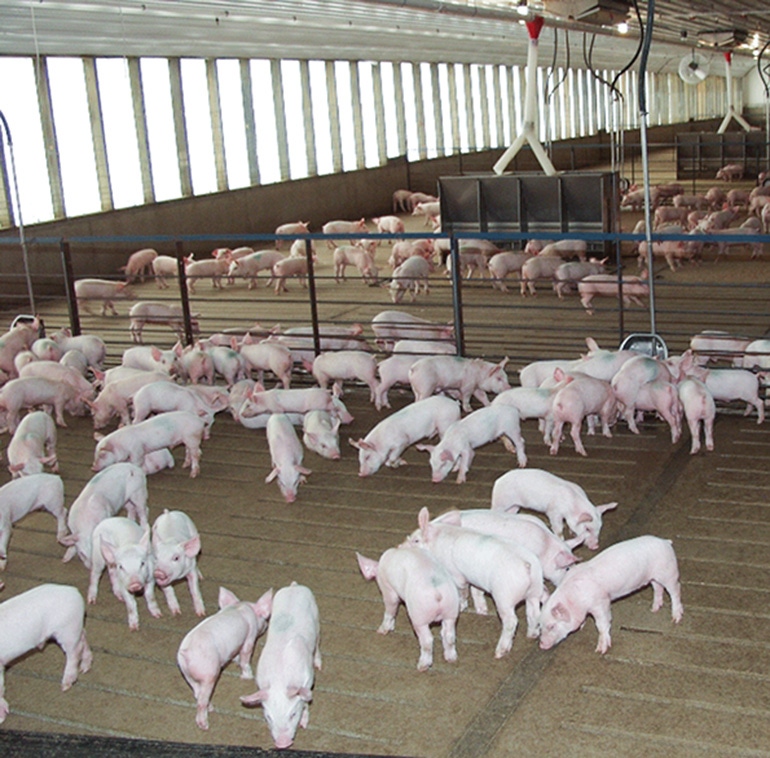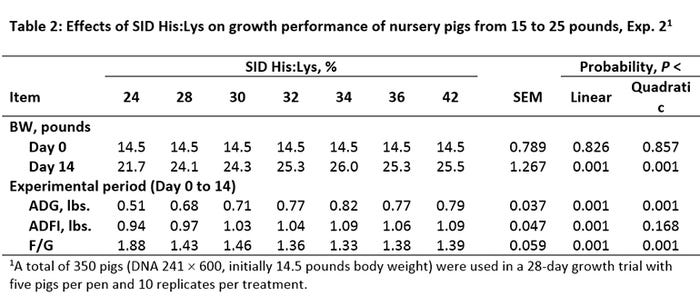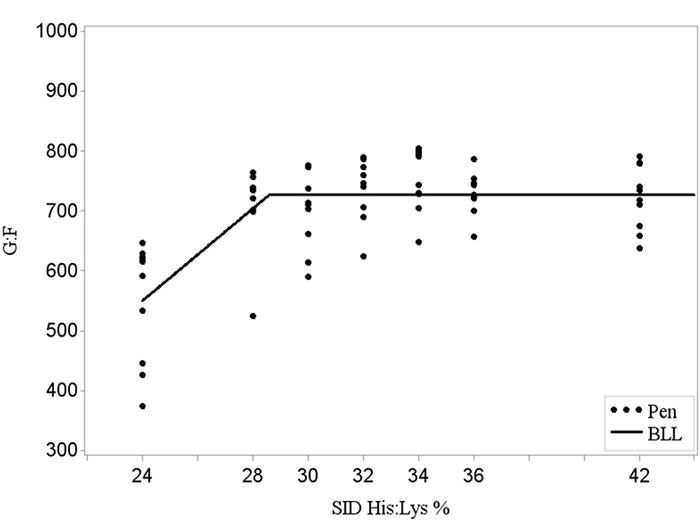Low crude protein, amino acid fortified nursery diets can be balanced to meet the pig’s SID His:Lys requirement, allowing for greater use of the currently available feed-grade amino acids.
June 27, 2018

By Henrique S. Cemin, Mike D. Tokach, Steve S. Dritz, Jason C. Woodworth, Joel M. DeRouchey and Robert D. Goodband, Kansas State University
Practical nursery diets are formulated with high inclusion of crystalline amino acids. The replacement of intact protein sources, such as soybean meal, with feed-grade amino acids increase as these become commercially available and economically justifiable. In most situations, it is cost-effective to add the crystalline amino acids L-Lysine, L-Threonine, L-Tryptophan, DL-Methionine and L-Valine. This strategy allows for reduction in diet cost, lower crude protein diets and reduction in N excretion to the environment. Using the National Research Council (2012) requirement estimate, histidine may become the next limiting amino acid after the first five amino acids. Therefore, the His requirement could limit the inclusion of higher levels of crystalline amino acids and, therefore, the opportunities to reduce cost of nursery diets.
The Kansas State University Applied Swine Nutrition team investigated the standardized ileal digestible His:Lys requirement for 15- to 25-pound nursery pigs in two studies. In both experiments, a basal diet containing corn, spray-dried whey and whey protein concentrate was formulated to be deficient in His. Then, treatments were created by adding L-His at the expense of corn. In Experiment 1, treatments were 24, 28, 32, 36, 40 and 44% SID His:Lys. After determining a requirement estimate in Experiment 1, we added more treatments around that point in Experiment 2, with treatments of 24, 28, 30, 32, 34, 36 and 42% SID His:Lys. Experimental diets were fed for 10 days in Experiment 1 and 14 days in Experiment 2, until pigs reached approximately 25-pounds average body weight.
In Experiment 1, average daily gain and average daily feed intake increased, then plateaued (quadratic, P < 0.01) and F/G improved, then plateaued (quadratic, P < 0.01) with increasing SID His:Lys (Table 1). The broken-line linear model estimated the requirements at 29.7, 29.1 and 29.8% SID His:Lys for ADG, ADFI and F/G (modeled as G/F), respectively.

In Experiment 2, ADG increased, then plateaued (quadratic, P = 0.001) and F/G improved, then plateaued (quadratic, P = 0.001), and ADFI linearly increased (P = 0.001) with increasing SID His:Lys (Table 2).

Similar to Experiment 1, the broken-line linear model was the best fitting model and estimated the requirement at 31% SID His:Lys for ADG and 28.6% for F/G (Figures 1 and 2).

Figure 1: The requirement for ADG in Experiment 2 was estimated at 31% SID His:Lys by regression modeling.

Figure 2: The requirement for feed efficiency in Experiment 2 was estimated at 28.6% SID His:Lys by regression modeling.
In conclusion, SID His:Lys requirement estimates were similar in both experiments. Results suggest that the SID His:Lys to optimize performance is no more than 31% for 15- to 25-pound pigs. The requirement estimates observed in this study are lower than the current NRC (2012) recommendation of 34% SID His:Lys. Therefore, low crude protein, amino acid fortified nursery diets can be balanced to meet the pig’s SID His:Lys requirement, allowing for greater use of the currently available feed-grade amino acids.
You May Also Like



